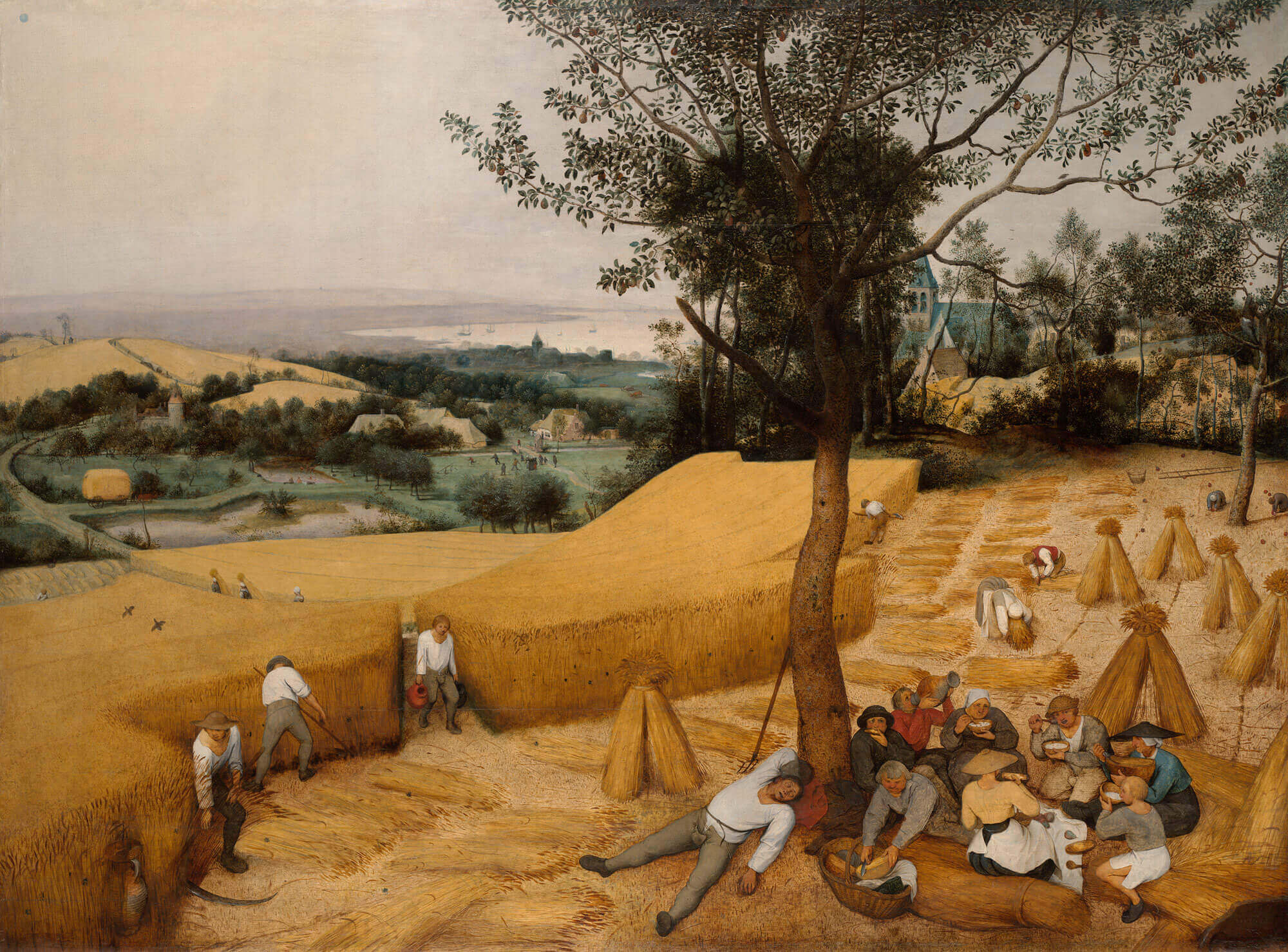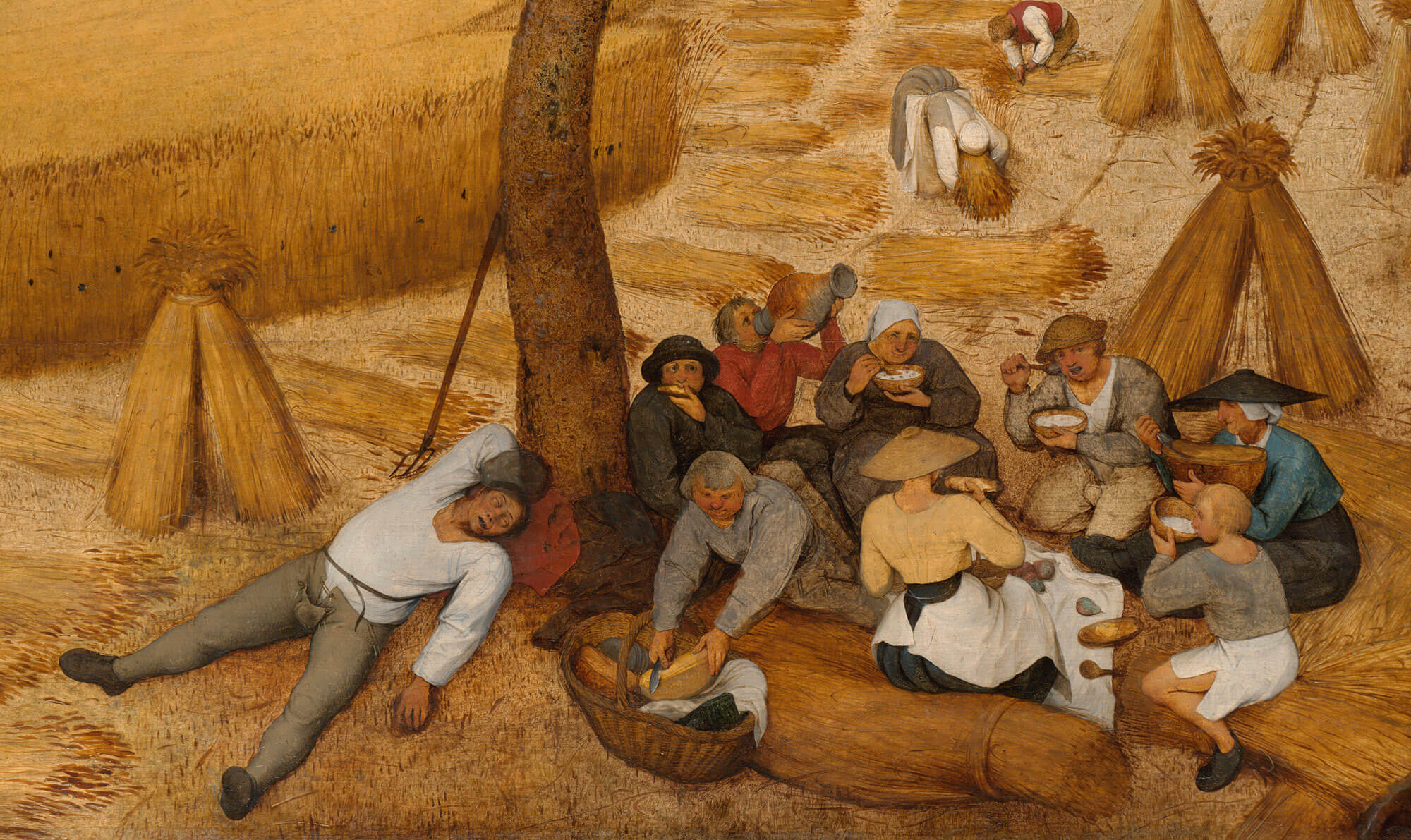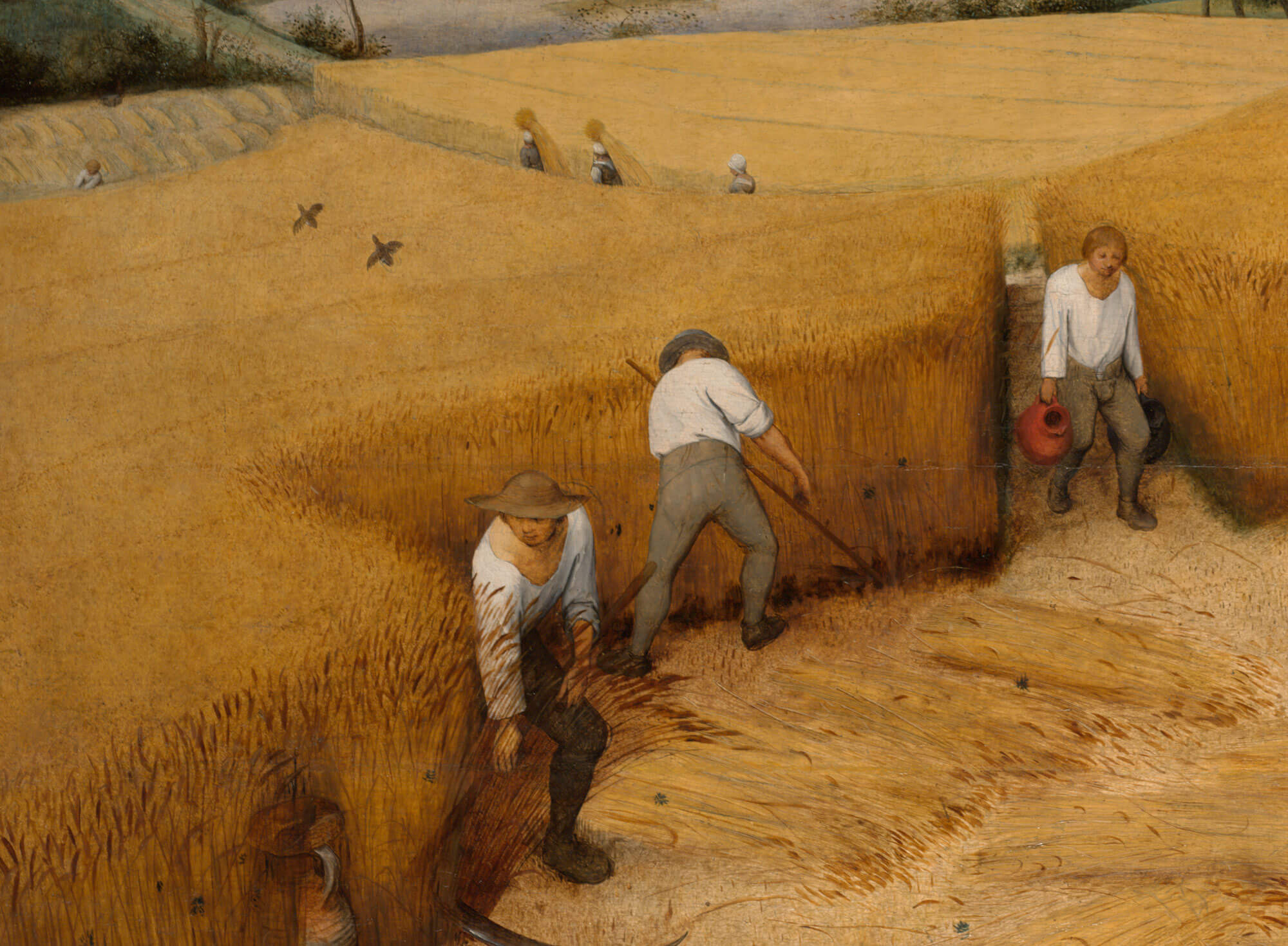The Harvesters: peasants and landscape. Of all Bruegel’s seasonal paintings, this one combines these two to greatest effect. This landscape is impossible without these people, Bruegel seems to say, just as the people are impossible without this place. Each gives the other function and meaning.
In pictorial terms, The Harvesters presents a great sweep of landscape, in the sense that the composition moves the eye from front to back, through the entire painting. But the progression of space is not the linear recession—parallel to the picture plane—which one sees in so many treatments of the landscape. Instead, Bruegel’s space is carved out curve by curve, the mown field in the foreground representing the outermost ring of a space that could be said to constrict around—or emanate from—a pivot point buried in the hazy grey of the distant bay. In this way, the painting could be read as a progression of five or six movements in space: from the mown field, to the unmown, to the path into the village and the deeper space of town, harbor and distant plane.
Each sweep of curved space is a plane whose surface points to a different nature. The harvested field and the unharvested both originate in the near space of the lower left hand corner and sweep back, beyond a windbreak of trees, toward a church in the middle distance. The surface of the first plane is the bare ground punctuated by the stubble of cut shafts. Its nature is of the work completed; it is the only suitable place to break for lunch. The surface of the second—parallel to the first, but a man’s height above it—is a thick downy blanket of mature wheat heads; its nature is of the work ahead.
Although one might argue that the harvested and the unharvested are part and parcel of the very same field, their treatment as distinct planes unlocks the visual—and metaphorical—structure of the entire image.

On the one hand, the division of space articulates the interdependence of the peasants and their physical environment, each sweep revealing subsequent stages of the economic system of which they are a part: once harvested, the wheat is carried to the road; a cart transports it from the edge of the village toward the distant town; ships await it so that they, in turn, can transport it to larger centers of manufacture and trade. In this sense, the painting connects the dots of a newly expanding economy, depicting the peasants as the heart of a system that profits only those at the far end.
If this version of the agrarian economy looks antiquated, it does so only to those of us who live in places where these processes have been mechanized to the point of invisibility. In the developing world, the economy of The Harvesters is the economy of today. Bananas, coffee, lumber, charcoal, tobacco, tea; from the moment of harvest, each starts a parallel journey from its place of origin toward its most profitable form. In this sense The Harvesters shares a quality with many historical images of labor; the temporal past they seem to depict is only the past for first world viewers. Thus did Courbet’s The Stone Breakers transform before my eyes from a historical image to a living reality as I witnessed gangs of laborers split boulders with hammers and chisels as they cleared a road through the Congolese rainforest.
The Harvesters, one of six paintings originally commissioned by an Antwerp merchant, is organized in part to articulate the mechanisms of the patron’s world. The apparent subversion of showing it all from the peasants’ perspective is one of the painting’s charms. But an extraordinary metaphorical leap gives the painting a charge well beyond its inventive depiction of this economy. This, too, relies on the painting’s division of space, and the key to unlocking it can be found in the shape of the scythe borne by the figure in the lower left corner.
As the harvester swings his tool to catch a swath of wheat, its force pushes the cut swath away from him toward the bare ground. It meets the ground in the manner of those that precede it, fanning out in perfect fidelity to the shape and contour of the field. This, in turn, is mirrored in the shape of the unmown portion of field, and so on back through space, one curve of the landscape after the next. If Bruegel’s peasants give the landscape its function, their tool gives it its form. Here, an entire world is constructed around the shape of its most essential unit.



